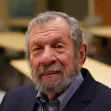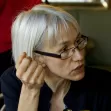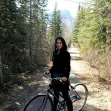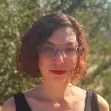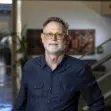World
Global issues, U.N., etc.
Why We Should Plan According to Ecosystem, Rather Than Artificial Boundaries
The often arbitrary boundaries drawn up to define territory limits how most planners determine the extents of their projects. Neil Chambers argues why we, and the planet, would be better served if we planned according to natural characteristics.
This News Link Has a Carbon Footprint
In response to a New York Times investigation in to the energy wastage of Internet companies and their vast, electricity-sucking data centers, Will Oremus argues that we all need to take a look at our own online carbon footprints.
Why All Cyclists Aren't Jerks
While Jim Saska admits that he's a jerk on his bicycle, he argues that the general perception among drivers that all cyclists are maniacs is not supported by statistics, and is instead a function of emotion [language warning].
Global Urbanization's Threat to the Global Environment
In the developed world, increased urbanization can be a net boon for the environment. Yet, writes Bryan Walsh, if not planned for carefully, the rapid urbanization of developing world could have a dramatic impact on climate change and biodiversity.
10 Principles for Productive Public Spaces
Mackenzie Keast surveys the ten fundamental principles for placemaking identified by New York-based Project for Public Spaces (PPS) in their newly released handbook Placemaking and the Future of Cities.
What Makes a City Smart?
Does a smart city have to pursue sustainability goals? Does it have to utilize the internet to involve citizens? Boyd Cohen tries to put some parameters around the discussion of smart cities - a nebulous term that means many things to many people.
New Tools Promote Civic Engagement
Ben Schiller spotlights the four winners of a competition organized by the National Conference on Citizenship and the Knight Foundation to improve civic health by making civic data "more valuable and accessible to decision makers and the public."
Why We Shouldn't Let Architects Shape Our Cities
In an essay for The Guardian, Jonathan Meades laments the "cult" of architecture and argues why "[a]ppointing architects to conceive places is like appointing foxes to advise on chicken security."
Popular Video Game Makes Planners Out of Schoolchildren
Not heard of Minecraft yet? Than you must not have a 10-year-old child in your house. Luckily, Sarah Goodyear does, and for our benefit, she describes the popular children's video game that explores real-world urban planning ideas.
One Year Later, Assessing Occupy Wall Street's Effect on Space
On the one-year anniversary of the beginning of Occupy Wall Street, Richard Sennett looks at the movement's legacy with regards to rethinking public space.
How Does Your City Stack Up...Sideways?
A project by French artist Armelle Caron looks at what happens when you take the patterns of blocks that make up a city's form and organize and stack them sideways. Robert Krulwich investigates what such an exercise reveals about a city.
Is Space Elevator Ready for Liftoff?
Alex Goldmark reports on the new NASA-inspired space elevator design that is primed for testing and could make it possible for billionaires to step foot on the moon sooner than later.
Cities Get Proactive About Citizen Gripes
Ever wish it didn't take 4 calls, 2 letters, and 1 community meeting to get a pothole fixed in your city? A new software developed by IBM would allow cities to mine social media to get a picture of public sentiment, long before you dial 3-1-1.
How Does Placemaking Pay?
Hazel Borys compiles an extraordinary list of studies quantifying the role of livable, walkable places in building equity, city coffers, health, and social capital.
Why Can't Urban Designers and Transit Planners Just Get Along?
Reflecting on his experiences at CNU's recent Transportation Summit, Jarrett Walker examines "the mutual incomprehension that plagues the relationship between urban designers and transit planners."
Why Public Spaces Are Crucial for 'the Future of the Human Race'
Jay Walljasper chronicles the decline of lively public spaces in the era of "rampant traffic, proliferating privatization, heightened security...and the internet," and human kind's existential need for protecting and expanding the public realm.
Formulating a New Metric for Walkability
Going beyond the analytical parameters of the popular Walk Score website, a new site aims to broaden the scope of analysis to include more qualitative information, such as safety and streetscape, in determining which areas are pedestrian friendly.
Steer Clear of the 5 Most Dangerous Roads in the World
Writing for Yahoo! Travel, Aefa Mulholland identifies five of the most dangerous roads in the world - from India's chaotic city streets to Bolivia's mountain hugging back roads.
The Many Benefits of 'Multiblock Underground Shared Parking'
The urban parking garage gets an overhaul with the innovation of multiblock parking. By constructing underneath multiple blocks, developers and cities can improve parking efficiencies and lower costs.
The (Slow) Rise of Wireless Technology
The technology is there, and has been for a decade. Still, Wi-Fi's roll-out into our homes has been slow, at best, and continues to be confronted by various challenges.
Pagination
Urban Design for Planners 1: Software Tools
This six-course series explores essential urban design concepts using open source software and equips planners with the tools they need to participate fully in the urban design process.
Planning for Universal Design
Learn the tools for implementing Universal Design in planning regulations.
Heyer Gruel & Associates PA
JM Goldson LLC
Custer County Colorado
City of Camden Redevelopment Agency
City of Astoria
Transportation Research & Education Center (TREC) at Portland State University
Camden Redevelopment Agency
City of Claremont
Municipality of Princeton (NJ)


























